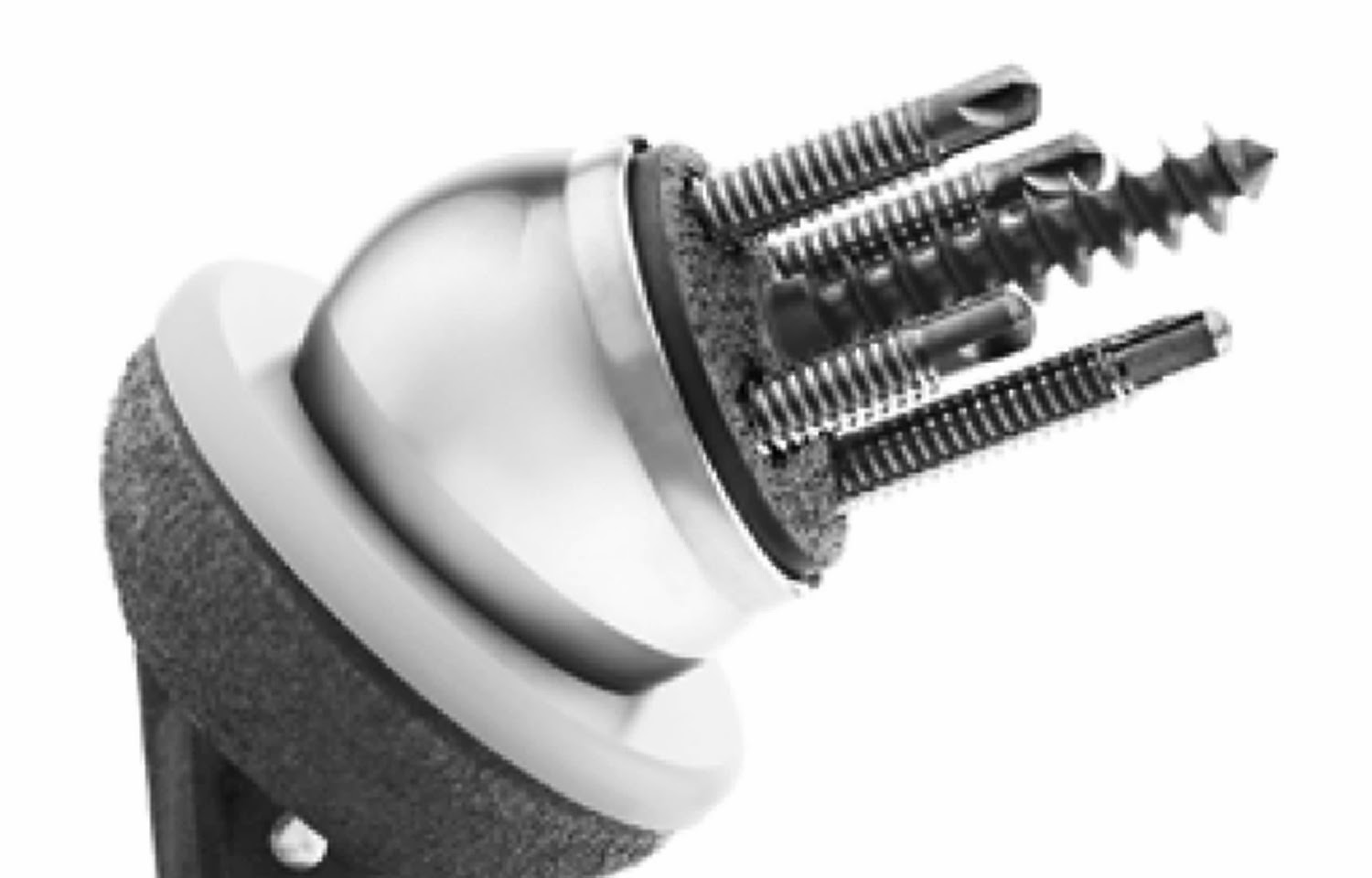By virtue of its constrained kinematics, the reverse total shoulder transmits loads directly from the humeral component to the glenoid component, without the suppleness of a normal or an anatomic arthroplasty. Thus, the fixation and integrity of reverse total shoulder components may be challenged by impacts that would be unlikely to affect a conventional total shoulder. Because the reverse total shoulder components are often modular and held together by Morse tapers and because they can be loaded in directions that can challenge the Morse taper, there is a risk of dissociation with impact loading.
The risk of dissociation can be reduced by considering the geometry of the specific implant and the instruments, by specific surgical steps, by vigorous intraoperative testing and by cautioning the patient to avoid impact loading after surgery.
After surgery, patients need to be reminded that impact loading is to be avoided.
Our current reverse total shoulder technique is shown in this link.
Glenoid component dissociation has been reported with various designs of reverse total shoulders (Sirveaux 2004)(Ekelund 2011) (Zumstein 2011) (Middernacht 2008)(Farshad 2010)(Kempton 2011)(Clark 2012).
The risk of dissociation can be reduced by considering the geometry of the specific implant and the instruments, by specific surgical steps, by vigorous intraoperative testing and by cautioning the patient to avoid impact loading after surgery.
As is the case with any Morse taper, incomplete seating - even by a fraction of a millimeter - can reduce the security of the cold weld between the two parts assembled by the taper. Complete seating can be prevented by fluid in the well of the female aspect of the assembly, by tissue or bone that block complete seating, or by insufficient force applied to impact the two components together.
In the design shown below, the glenoid head (glenosphere) fits over the baseplate but does not completely cover it. thus it may be difficult to see whether or not the glenoid head is completely seated.
Instruments, such as the rim reamer shown below help remove potentially interfering bone that may prevent the glenoid head from being completely seated.
This works well for the small glenoid head, because the outside diameter of the rim reamer is greater than that of the collar of the small glenoid head.
The rim reamer may be less effective when the collar of the glenoid head has an outside diameter greater than that of the rim reamer.
The principal method by which the seating can be verified is to pull vigorously on the glenoid head after it has been impacted into position, attempting to dissociate it from the baseplate. With some designs, vigorous traction can be applied using a t-handled instrument. An even better test can be performed by attempting to twist the glenosphere using the t-handle: if it twists on the base plate, it is not securely seated.
After surgery, patients need to be reminded that impact loading is to be avoided.
Our current reverse total shoulder technique is shown in this link.
====
Consultation for those who live a distance away from Seattle.
Click here to see the new Shoulder Arthritis Book.
Click here to see the new Rotator Cuff Book
Consultation for those who live a distance away from Seattle.
Click here to see the new Shoulder Arthritis Book.
Click here to see the new Rotator Cuff Book
To see the topics covered in this Blog, click here
Use the "Search" box to the right to find other topics of interest to you.
You may be interested in some of our most visited web pages including:shoulder arthritis, total shoulder, ream and run, reverse total shoulder, CTA arthroplasty, and rotator cuff surgery as well as the 'ream and run essentials'
See from which cities our patients come.
See the countries from which our readers come on this post.
You may be interested in some of our most visited web pages including:shoulder arthritis, total shoulder, ream and run, reverse total shoulder, CTA arthroplasty, and rotator cuff surgery as well as the 'ream and run essentials'
See from which cities our patients come.
See the countries from which our readers come on this post.






